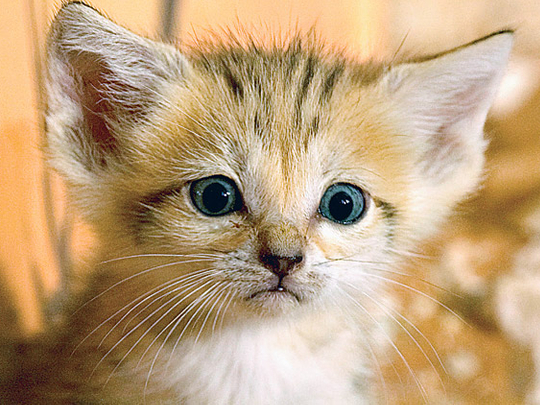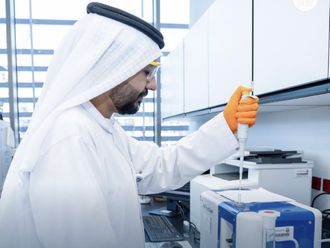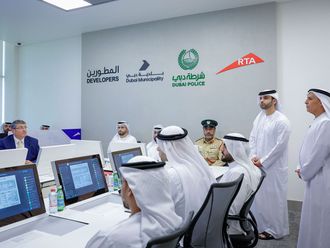
Al Ain: A sand cat kitten, born as a result of in-vitro fertilization (IVF) and an embryo transfer procedure, is now on exhibit with her mother at the Al Ain Wildlife Park and Resort (AWPR).
The AWPR said it was its first successful species-specific IVF and embryo transfer procedure.
Experts believed the procedure's success proved it was a viable tool for the conservation of arid land carnivores.
"We have more work to do in this area, but this is a fine beginning," said Dr Mike Maunder, the Chief Conservation, Collection, and Education Officer, at the AWPR.
The kitten was born as part of an ongoing conservation partnership between the AWPR, the US University of Illinois and the Cincinnati Zoo and Botanical Garden.
The sand cat, native to the Middle East and parts of North Africa, is listed as near threatened by the International Union for Conservation of Nature. Its wild population is declining as a result of habitat destruction and declining prey base. The AWPR's conservation program focuses on the protection and restoration of arid land biodiversity, with a special focus on carnivores, the AWPR official said.
Four sand cat mothers at AWPR received IVF embryos during the first phase of a programme called Project Sand Cat.
On December 13, 2009, one of the mothers gave birth to a pair of sand cat kittens marking an historic day in the protection of this species.
"Of the four sand cat mothers in Project Sand Cat, this mother successfully carried a litter to term," said AWPR animal collection manager Farshid Merhdadfar. "We were saddened to see one kitten die, but this unique queen-kitten sand cat pair is a testament to AWPR's conservation research and we are proud to introduce them to the public."
In the second phase of the project, recently completed at California's Living Desert Zoo, embryos from the AWPR's sand cats were transferred to two females. But neither gave birth to kittens.












